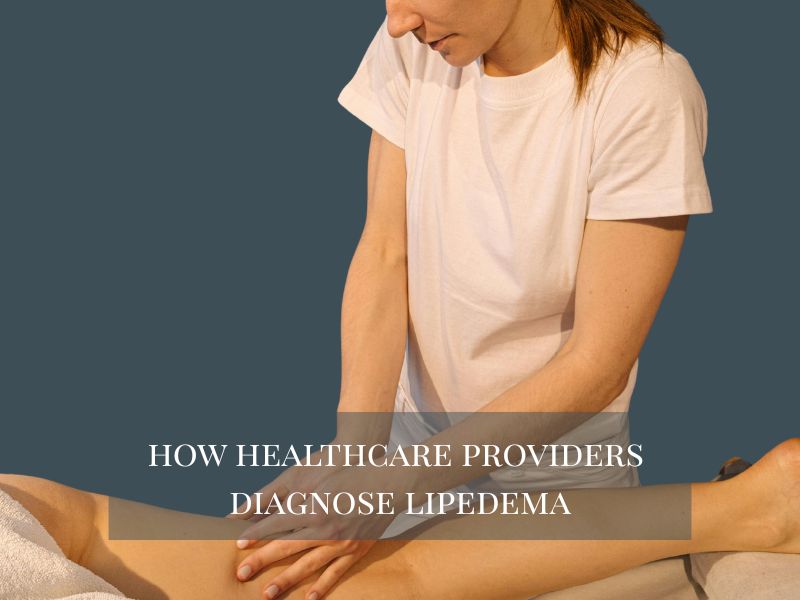Living with lipedema can be frustrating, especially when the usual advice like lose weight, move more, or try new diets doesn’t help. The fat doesn’t go away, the swelling stays, and the pain starts to interfere with daily life. For many lipedema patients, the search for answers eventually leads to treatment options that go beyond diet and exercise. But a common concern remains: Is lipedema surgery covered by insurance? Understanding your options and knowing how to navigate insurance coverage can be just as important as finding the right treatment.
Some start with conservative treatments like compression therapy or manual lymphatic drainage to help manage discomfort. Others need surgical treatment to remove the fat buildup and improve mobility. That’s when a new question comes up: will insurance cover it?
Coverage depends on several factors: your provider, your plan, and whether you’ve already tried non-surgical options to treat lipedema. Understanding the typical insurance requirements and treatment pathways can help you prepare and advocate for the care you need.
About the Lipedema Treatment
Lipedema isn’t something you can fix with a diet or a few trips to the gym. The condition causes a painful, uneven buildup of fat mostly in the legs, hips, and arms, and it often resists typical efforts to lose weight. Many lipedema patients go years without answers, trying one-size-fits-all solutions that simply don’t work.
An effective lipedema treatment plan usually starts with conservative treatments. Things like compression therapy, manual lymphatic drainage, and even gentle movement through physical therapy can help reduce discomfort, stiffness, and fluid buildup. Some also find that following an anti-inflammatory diet or swimming in warm water can make a real difference day to day.
But when the pain grows worse or mobility becomes limited, non-surgical care might not be enough. That’s when many people consider surgical treatment. Tumescent liposuction is the most common approach. It targets the adipose tissue without damaging the lymphatic system.
Some patients with severe cases or coexisting conditions may also look into bariatric surgery, though it’s important to know that lipedema fat usually doesn’t respond the way other fat might. That’s why getting an accurate lipedema diagnosis matters; it helps guide the best care for your body, not someone else’s.
How Healthcare Providers Diagnose Lipedema

If you’ve been told over and over to just “eat better” or “work out more,” you’re not alone. Many lipedema patients spend years trying to explain symptoms no one seems to understand—painful swelling in the legs or arms, bruising for no reason, and fat that simply doesn’t respond to dieting. The truth is, lipedema looks and feels different from regular weight gain, and once you know what to look for, the signs are often clear.
When a provider is familiar with the condition, the first step is a conversation. They’ll ask about your medical history and when you started noticing changes, whether the swelling gets worse during the day, and if your legs feel heavy or tender. One key detail: the feet and hands are usually unaffected, which helps separate lipedema from things like lymphedema or venous insufficiency.
Next comes a hands-on exam. They might gently press along your legs or arms, feeling for areas of uneven, grainy fat. These are called palpable tissue nodules, and they sit just under the skin, in the subcutaneous tissue. You may hear them talk about symmetry (both sides are affected), or note that the fat ends abruptly at the ankles or wrists.
Sometimes, imaging like magnetic resonance imaging or ultrasound can help rule out other issues or spot problems in the lymphatic system, especially if there’s concern about lipo lymphedema developing later on.
The most important thing? Getting an accurate diagnosis from someone who listens and knows what they’re looking for. A rushed appointment can miss all of this. But with the right eyes on it, it’s possible to finally get answers and start planning an effective treatment that actually helps.
It’s also important to know that many insurance providers won’t consider covering surgical treatment for lipedema without proper documentation. A clear, medically supported diagnosis from a knowledgeable provider can make all the difference, not just in managing your symptoms, but in opening the door to care that’s actually covered.
What are the Symptoms of Lipedema
You might notice your legs getting heavier, even though your weight hasn’t changed much. The fat builds up mostly in the hips, thighs, and sometimes the arms, but the fat in your feet and hands remains the same. That’s one of the early signs. The fat tissue feels different too, as it’s firmer, sometimes lumpy, and often sore to the touch.
Many lipedema patients bruise easily and say their legs hurt just from walking or standing too long. It’s not just swelling; it’s deep discomfort. Over time, you may see swollen legs, aching joints, or loose skin around the knees. These changes affect your day-to-day life more than most people realize.
Getting a diagnosis isn’t just about understanding what’s going on. It matters for insurance, too. Most plans won’t cover surgical procedures unless you have clear documentation of your lipedema symptoms from a qualified provider. That’s why it’s important to get evaluated early and by someone who truly understands this condition.
Managing Lipedema Symptoms
There’s no one-size-fits-all way to treat lipedema, but most patients start by trying to manage the pain and swelling with everyday tools. The goal isn’t to fix everything overnight; it’s to feel a little more comfortable in your body, day by day.
Lymphatic drainage helps. Whether through manual techniques or gentle movement like walking or swimming, it keeps things from building up and making the legs feel heavy and tight. Compression garments are another go-to, yet they’re not always comfortable. They support your tissues and reduce pressure. Some patients also find that a steady routine of moderate exercise and an anti-inflammatory diet can make a difference over time.
These early steps don’t remove the lipedema fat, but they can alleviate symptoms and help you move better. They also matter for another reason: most insurance plans expect to see a history of conservative treatment before they’ll consider covering any surgical procedures. So even if these tools don’t solve everything, documenting your efforts matters.
Everybody responds differently. Some days will be easier than others. However, these small steps can help protect your mobility and maintain your quality of life, especially if you’re still waiting for a more permanent solution.
Surgical Treatment for Lipedema

The most common approach is tumescent liposuction, a surgical technique that targets diseased fat tissue while protecting the lymph vessels. It’s not the same as cosmetic liposuction; it’s gentler, done in stages, and focused on restoring movement and improving quality of life. Some providers may mention bariatric surgery, but that doesn’t usually address lipedema fat, which responds differently from other types of fat.
If you’re thinking about surgery, know that insurance coverage can be challenging. Most plans want to see that you’ve tried conservative care first, like lymphatic drainage, compression, or diet changes. A solid diagnosis and medical documentation from a provider who understands lipedema treatment make a huge difference in getting approved.
Recovery After Lipedema Treatments
Recovery isn’t always quick, but for many people, it’s worth it. After liposuction, you’ll probably go home the same day. We usually encourage light walking right away as it helps keep swelling down and supports wound healing. You’ll be in compression garments for a while, and yes, they’re uncomfortable at first, but they help protect the area and support the soft tissues as your body adjusts.
Soreness, bruising, and fatigue are common in the first week or two. The important thing is to move gently, rest when needed, and follow your post-op plan. Over time, we often see improvements, not just physically, but emotionally too. When that constant pressure from the lipedema fat is gone, things like walking or sitting get easier.
However, insurance doesn’t always cover things like post-op compression or follow-up therapy, so check your plan if you’re budgeting. Some patients require ongoing lymphatic drainage or lymphedema therapy to manage their symptoms effectively. If you’re working with a provider who understands how to treat lipedema, they can help you navigate what is covered and what is not.
FAQs: Is Lipedema Surgery Covered by Insurance?
What is the Lipedema Foundation?
A nonprofit organization that funds research and awareness to improve the lives of people with lipedema.
What to Do After Your Lipedema Diagnosis?
Find a provider experienced in lipedema, start conservative care, and begin documenting your symptoms and treatment history.
Are There Conservative Treatments for Lipedema?
Yes, options include compression therapy, lymphatic drainage, gentle movement, and a diet that is anti-inflammatory.
Does Diet and Exercise Help Lipedema?
They can help relieve symptoms, but they won’t reduce lipedema fat, which often resists weight loss.
How Much is Lipedema Surgery?
Lipedema surgery costs can vary widely depending on geographic location and other factors such as the provider, facility, and specific procedures involved. Across the United States, significant regional differences have been observed, with areas like California, Florida, and New York showing varying billing practices and insurance dynamics
Book Your Lipedema Treatment Consultation
If lipedema is affecting your daily life, we’re here to help you find real answers and real relief. Call our office to schedule a consultation with Dr. Chegireddy at Atlanta Plastic Surgery. We’ll walk you through your options and help you understand what insurance may cover.



